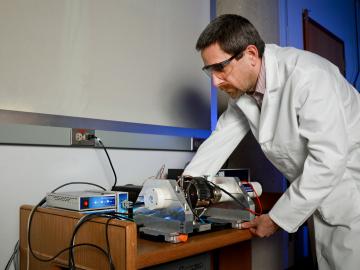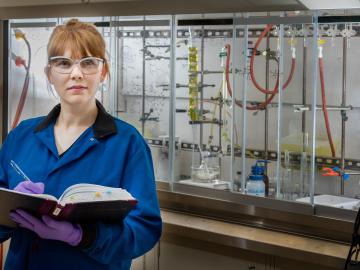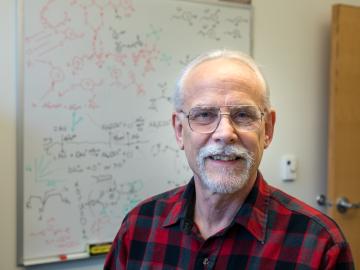
Filter News
Area of Research
- (-) Materials (109)
- Advanced Manufacturing (16)
- Biological Systems (2)
- Biology and Environment (76)
- Building Technologies (7)
- Chemical and Engineering Materials (1)
- Chemistry and Physics at Interfaces (1)
- Clean Energy (230)
- Climate and Environmental Systems (4)
- Computational Biology (1)
- Computational Engineering (2)
- Computer Science (10)
- Data (1)
- Electricity and Smart Grid (1)
- Energy Frontier Research Centers (1)
- Energy Sciences (2)
- Fossil Energy (1)
- Functional Materials for Energy (1)
- Fusion and Fission (11)
- Fusion Energy (8)
- Isotope Development and Production (2)
- Isotopes (14)
- Materials for Computing (10)
- Materials Synthesis from Atoms to Systems (1)
- Materials Under Extremes (1)
- Mathematics (1)
- National Security (24)
- Neutron Data Analysis and Visualization (2)
- Neutron Science (43)
- Nuclear Science and Technology (23)
- Nuclear Systems Modeling, Simulation and Validation (2)
- Quantum information Science (3)
- Renewable Energy (3)
- Sensors and Controls (3)
- Supercomputing (50)
- Transportation Systems (2)
News Type
News Topics
- 3-D Printing/Advanced Manufacturing (6)
- Advanced Reactors (1)
- Bioenergy (2)
- Biomedical (2)
- Buildings (1)
- Chemical Sciences (6)
- Clean Water (1)
- Composites (4)
- Computer Science (1)
- Coronavirus (1)
- Critical Materials (5)
- Decarbonization (1)
- Energy Storage (8)
- Environment (2)
- Fusion (3)
- Isotopes (2)
- Materials (15)
- Materials Science (25)
- Microscopy (9)
- Molten Salt (1)
- Nanotechnology (12)
- Neutron Science (6)
- Nuclear Energy (5)
- Physics (8)
- Polymers (8)
- Quantum Computing (2)
- Quantum Science (1)
- Space Exploration (1)
- Sustainable Energy (3)
- Transportation (6)
Media Contacts

Using additive manufacturing, scientists experimenting with tungsten at Oak Ridge National Laboratory hope to unlock new potential of the high-performance heat-transferring material used to protect components from the plasma inside a fusion reactor. Fusion requires hydrogen isotopes to reach millions of degrees.

A new method developed at Oak Ridge National Laboratory improves the energy efficiency of a desalination process known as solar-thermal evaporation.

Raphaël Hermann of the Department of Energy’s Oak Ridge National Laboratory conducts experiments to better understand materials for energy and information applications.

Oak Ridge National Laboratory has teamed with Cornell College and the University of Tennessee to study ways to repurpose waste soft drinks for carbon capture that could help cut carbon dioxide emissions.

A team of researchers at Oak Ridge National Laboratory have demonstrated that designed synthetic polymers can serve as a high-performance binding material for next-generation lithium-ion batteries.

Researchers have pioneered a new technique using pressure to manipulate magnetism in thin film materials used to enhance performance in electronic devices.

An organic chemist at Oak Ridge National Laboratory, Santa Jansone-Popova focuses on the fundamental challenges of chemical separations that translate to world-changing solutions for clean water and sustainable energy.

Scientists have discovered a way to alter heat transport in thermoelectric materials, a finding that may ultimately improve energy efficiency as the materials

Bruce Moyer’s career as a trailblazing chemist began with a Gilbert chemistry set, the perfect Christmas gift for an inquisitive kid growing up in 1960s Pennsylvania. Moyer squirreled away the test tubes and racks of chemicals in his bedroom to conduct unsupervised experiments on solubility, corrosion, and other subjects included in Gilbert’s captivating manual.

Kevin Field at the Department of Energy’s Oak Ridge National Laboratory synthesizes and scrutinizes materials for nuclear power systems that must perform safely and efficiently over decades of irradiation.


